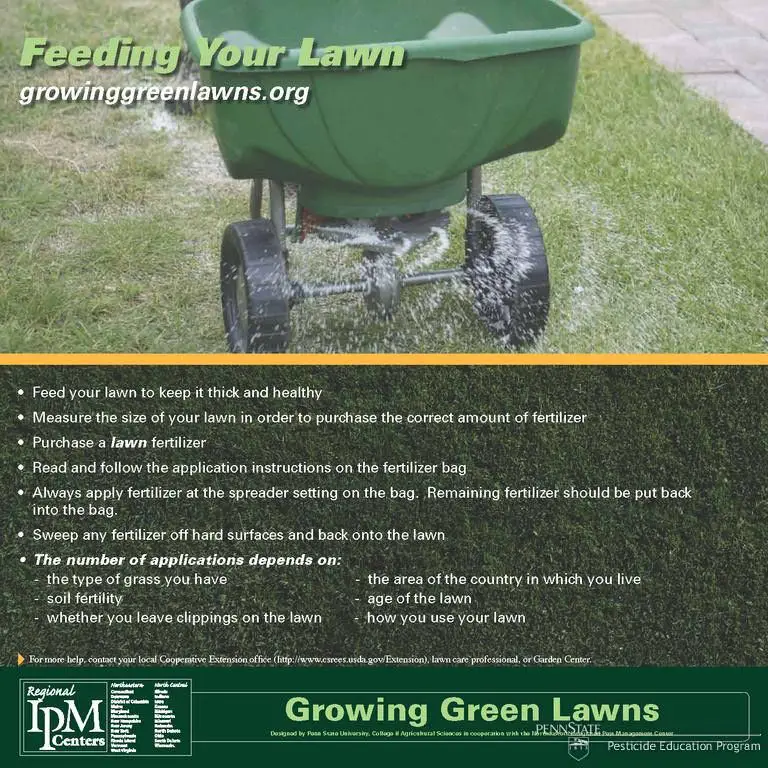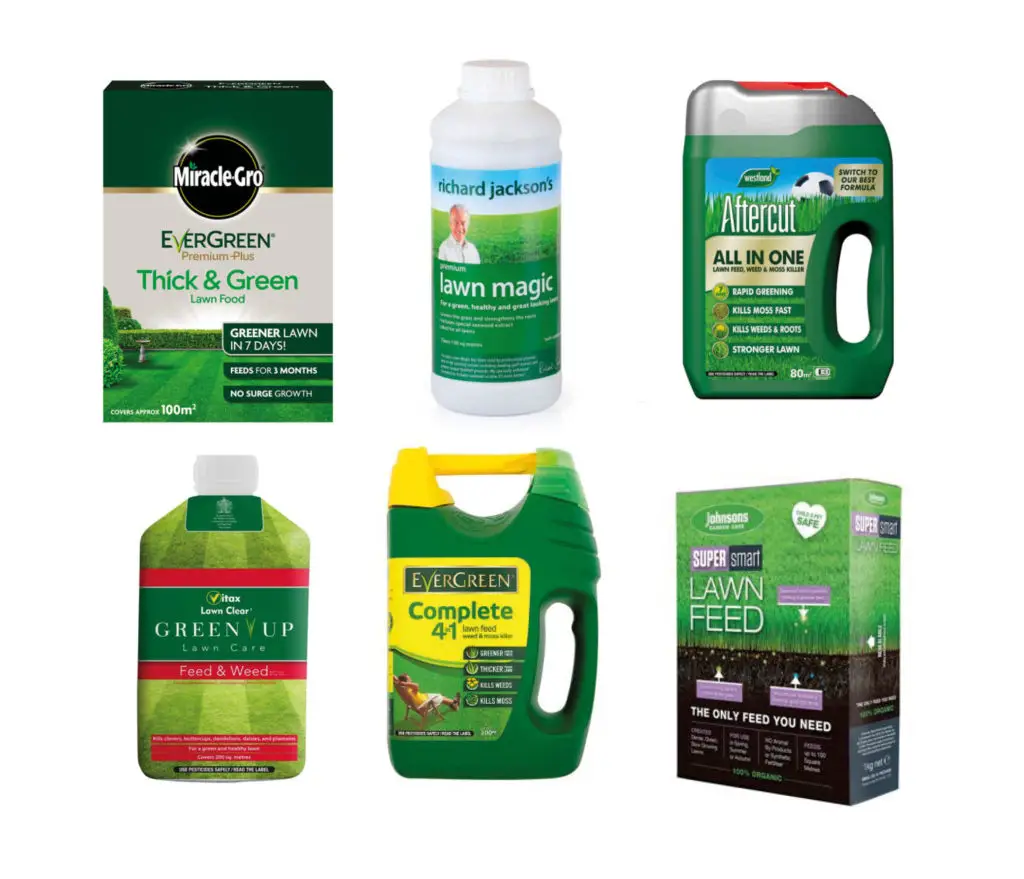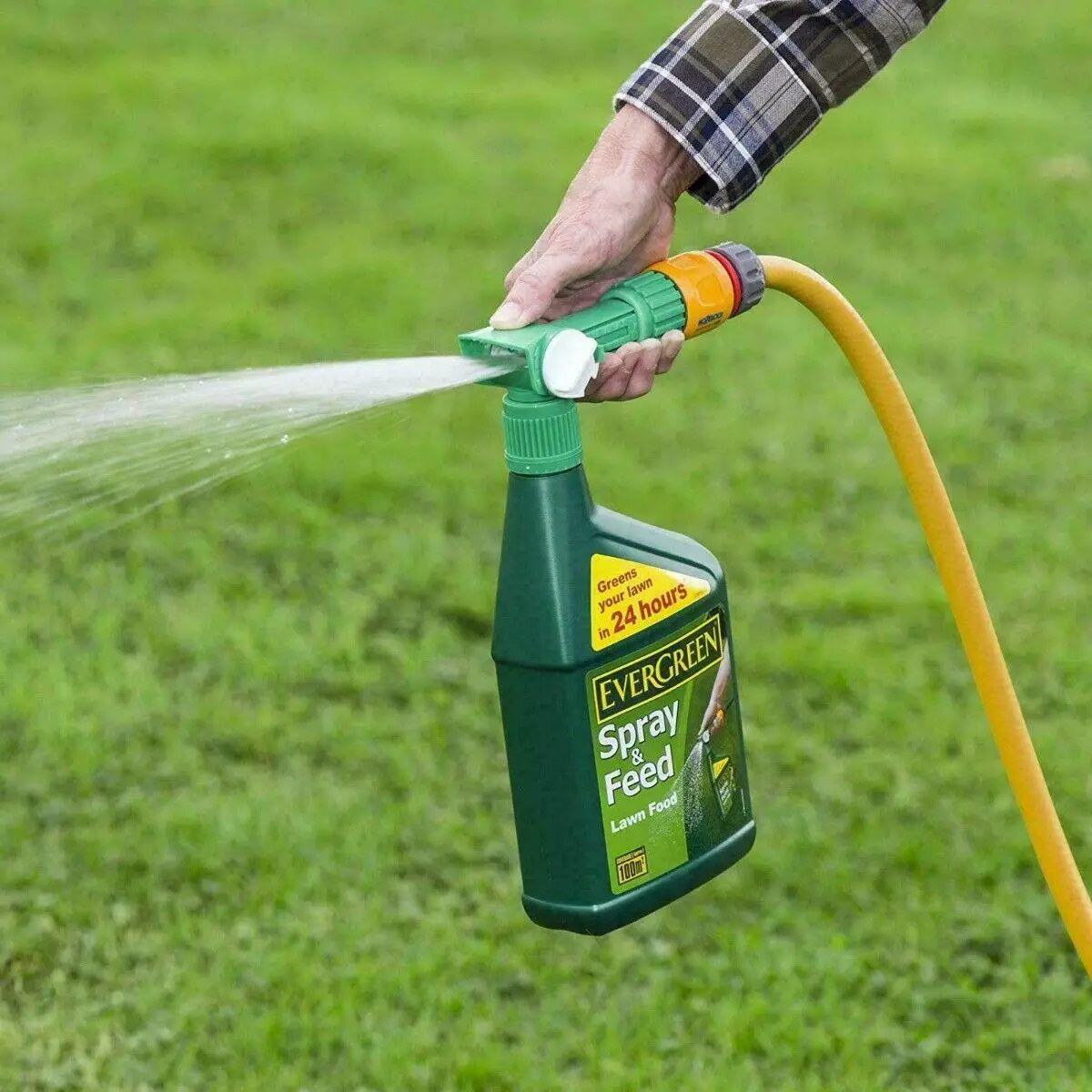What Is The Best Time Of Day To Apply Weed Killer
Systemic herbicides work best when applied late morning, midday and in the afternoon in cool or cold climates. Plant growth slows down at dusk and speeds up again as the sun rises the following day. Heavy early morning dew can cause herbicides to run off, so its best apply them after dew has evaporated.
How Often You Should Apply Fertilizer To Your Lawn
Though fertilizer has its benefits, you dont want to overdo it. A full feeding is recommended at least 5-6 times per year. You want to feed your lawn when its growing most rapidly. However, you should base the frequency on your climate and the type of grass you have. For example, cool season grasses can be fertilized in late spring, but only if necessary.
Warm season grasses, like Bermuda grass, St. Augustine, zoysia, centipede and buffalo grass, should be fertilized in spring. Depending on the amount of water your grass gets, aim to reapply your fertilizer every 6-8 weeks. Keep a watchful eye on your grass. If it looks thick and green, you can probably skip the feeding. If its starting to look brown or black, give your lawn some TLC.
How To Apply Milorganite To Lawn
Thats how long Milorganite has been trusted by golf course professionals and homeowners. Milorganite is an all-purpose slow-release nitrogen fertilizer that can be used safely on lawns, flowers, vegetables, shrubs, and trees, as well as a carrier when spreading grass seed.
This provides even growth and better root development over a longer period of time, instead of a sudden growth spurt and excessive grass clippings. This provides even growth and better root development over a longer period of time, instead of a sudden growth spurt and excessive grass clippingsDoesn’t Burn Milorganite contains virtually no salts, so it wont burn your lawn, even in the hottest temperatures or driest conditions. Milorganites organically complex iron enhances the color of your lawn throughout the feeding period.
Also Check: What Is Best Lawn Edging
Why You Need To Feed Your Lawn
All through the warmer seasons your lawn is used as a place for picnics, parties, and playing, as well as being frequently mown and suffering other stresses. All of these activities contribute to depleting leaf mass, and as such the vital nutrients your lawn needs to thrive. Fertilising with the right lawn feed restores essential nutrients to your grass, of which nitrogen in particular promotes the regeneration of all parts of the plant. Good lawn feed products include nitrogen alongside potassium to strengthen the grass against disease, and phosphorus to promote root growth, all in balanced proportions to support your lawn appropriately.
What Is Mulch Mowing

Conventional mowing collects the clippings from your lawn, while with mulch mowing they are distributed back over the lawn. This process returns vital nutrients to the earth in a practical and natural way, as the nitrogen in the mulched grass clippings is quickly mineralised and so becomes a valuable fertiliser. Youll need a special mulch mower that shreds the grass cuttings into small particles before scattering them. This shredding step ensures that the grass clippings are usefully delivered to your lawn, rather than smothering it.
Read Also: Who Sells Lawn Boy Lawn Mowers
Can You Use Too Much Lawn Fertilizer
You can use too much fertilizer, which is why using a spreader and following the manufacturer’s instructions carefully are both good options. And yes, using too much fertilizer can harm your lawn, leaving the individual blades of grass scorched.
‘Avoid overdoing the fertilizer as you will produce soft weak growth which will just grow too long too quickly,’ comments David Truby. ‘Make sure there is an even coverage as this will ensure the uniformity of color across the entire lawn. To do this, you should use a spreader designed specifically for this purpose and apply the required amount in two halves to help get a more even coverage across your lawn.’
How To Apply Fertilizer
Once youve applied the weed killer, youll need to add the fertilizer to your lawn. This will encourage the grass to grow. The time to apply fertilizer will depend on the type of lawn that you have.
If you have a newly planted lawn, youll often need to wait at least six weeks before you can start fertilizing it. This is because they will be planted with plenty of fertilizer, so you dont need to add any more. If youve recently installed a new lawn, you might want to call the nursery and check when you can start fertilizing.
Two days before you add fertilizer, youll need to water the lawn. This will help prepare the lawn to receive the nutrients. For an even better effect, you might want to aerate the lawn before applying the fertilizer. This will allow the nutrients to pass directly into the soil.
Once youve prepared the soil, youll need to add the fertilizer. There are many ways that you can do this. For example, you might want to get pellet fertilizer, which youll need to spread around the lawn. In other cases, you might get an attachment which youll need to slip onto the end of the hose, to spray it onto the lawn. The fertilizer will contain instructions about how its meant to be applied onto the lawn. Unlike the weed killer, which is applied selectively, fertilizer is applied to the entire lawn.
Also Check: What To Apply To Lawn In Spring
Should I Weed And Feed My Lawn In The Fall
Apply weed and feed in the spring after weeds begin to pop up. If you think you need to apply weed and feed to your lawn a second time, wait until fall so your lawn has time to recover before the fall. Dont apply weed and feed to a newly seeded lawn until its been mowed at least twice.
The Right Lawn Feed For Your Garden
Theres no universal fertiliser that is right for every lawn, so you need to find a slow-release fertiliser that is suitable for the type of lawn you have. Never use fertilisers intended for cultivating crops, as these are only effective in the short term and will put a strain on the roots of your lawn because they contain the wrong concentrations of nutrients for grass.
Once youve found the right feed, you can get going with the actual fertilising process. The right way to apply fertiliser to your lawn depends primarily on the type you are using.
Recommended Reading: How To Treat Lawn Weeds Naturally
Use The Right Spreader
When applying lawn fertilizers, always use a lawn spreader. Never spread product by hand! A broadcast spreader with a side-shield feature like the EdgeGuard® feature is great for most lawns. This makes application along the lawn’s perimeter easy by shutting off half the spreader flow, so product is only applied on the lawn and not on non-lawn areas like the driveway, sidewalk, or landscaping. A drop spreader is another option for small spaces because the application area is much narrower. Learn more about which spreader is right your yard .
Fill the spreader hopper with your lawn fertilizer, then set the spreader to the recommended setting listed on the product package. If the product package does not provide a spreader setting, it is not intended for lawn use.
What If You Apply Too Much Weed & Feed
The best way to avoid damaging your lawn is the flush out the weed & feed. Water your lawn with 1 to 2 inches of water for about 4 days. Dont apply any other weed & feed until the following year.
Unfortunately, over watering like this can create run-off in certain drainage situations, so try to avoid the situation in the first place.
Read Also: How To Kill Moles In Your Lawn
Tips For Applying Weed And Feed Fertiliser On Your Lawn:
- Apply only on an established lawn
- Apply our fertiliser at the recommended rate by hand, either when wearing gloves or when using a spreader
- Water the fertiliser in, until it dissolves
- Keep kids and pets away from the lawn during application and until the granules dissolve
- Remove and clean any footwear you were wearing during the application of the fertiliser to avoid any risk of damage to newly laid patios / stone flag flooring
Be aware that if you do not water your fertiliser in, you can potentially scorch existing grass or delay the benefits of the fertiliser. Likewise, if the fertiliser does not disappear and dissolve off the surface after initial watering, then water it until you can no longer see the granules.
After you have successfully applied and watered in the fertiliser, be sure to allow the product to work for over two weeks before overseeding patches with fresh grass seed.
Here’s what you should do if you encounter weeds on your newly seeded lawn:
- Don’t panic and dont use a Feed, Weed and Mosskiller product on a new lawn
- These weeds will be shallow rooting and you can pull them out by hand, or wait until the 68-week mark to mow them out
- If the weeds are persistent and reoccurring, use a selective herbicide to spot-treat them
What Should I Feed My Lawn With

There are many lawn treatments out there, however, it is important you find the right lawn feed for your garden. Some treatments just feed your garden, which is ideal if your lawn is weed and moss free and does not need much attention.
But there are others, which have added ingredients, such as weed and moss killers. These will be a massive help if you dont regularly get rid of weeds.
There are also some treatments available to be used specifically in autumn, to toughen up the grass ready for the winter, which will also kill moss.
Some lawn feeds are better than others, as some contain nitrogen, which will be released over several weeks and feed your lawn over a specific period, rather than in one rush soon after application, like many other treatments.Come autumn, your lawn will need a different type of feed than what you would use in the warmer months. It needs a treatment that will keep the grass growing at a slow rate and not so lush, but still as green as possible. It will also need to prepare your lawn for the winter, by building up the roots and health of the grass to withstand the colder months, to be still healthy and thick by spring.
Your autumn lawn feed of choice should be low in nitrogen, as you dont want to encourage any top growth, which can be soft and easily damaged by harsh winter weather conditions.
Recommended Reading: Where To Buy Corn Gluten Meal For Lawn
Best Time To Fertilize Your Lawn
Spring means more daylight and warmer temperatures. After a cold winter, this is the weather your grass is craving. If youre unsure of exactly when to lay down your first feeding, you can base it off of the temperature. Ideally, the ground should be around 55 degrees Fahrenheit. Depending on where you live, March to April is the best time to fertilize your lawn. Its also best if your yard is watered a few days before you want to apply the fertilizer, whether thats from rain or a sprinkler.
Fertilizer provides your grass with extra nutrients that help to prevent crabgrass and allow it to grow green and thick. To ensure youre laying the feed correctly, start around the perimeter of your lawn. Then, you can start filling in the middle. Similar to mowing your yard, you should go back and forth in straight lines. And you should always use a lawn spreader instead of your hands to complete the job.
Now that you know that spring is the best time to fertilize your lawn, here are some other helpful tips that will keep your grass thriving.
When To Fertilize The Lawn In Spring
Kelly Burke is a professional turf manager for a manicured corporate campus in New England. He is accredited in organic land care and is a licensed pesticide applicator. He formerly managed the turfgrass as a golf course superintendent and has held several senior management positions at private country clubs overseeing high maintenance lawns.
The Spruce / Jayme Burrows
Most people apply a dose of lawn fertilizer in the spring, followed by one or two more applications during the growing season. If you are going to fertilize your lawn, do not do it too early in the season. The best time for that first application is late spring, just as the green grass is beginning to grow eagerly. In early spring, the grass is putting energy into root development. If you apply fertilizer too early, it will divert the plant’s energy into leaf development too soon.
You May Like: When To Fertilize Lawn In Ohio
How Soon You Can Fertilize After Seeding Your Lawn
Its not always after seeding that you should apply fertilizerthe best time to fertilize is right before or during the seeding process. Use a starter fertilizer with quick-release nitrogen since that will give the seeds a nutritional boost. When you make fertilizer a part of the seeding process, your grass will grow quicker and is more likely to end up healthy and lush.
When To Apply Milorganite
When to Apply Milorganite
Milorganite is an organic nitrogen fertilizer. After clean water is pumped to Lake Michigan, the leftover microbes are heat-dried to become Milorganite. Apply Milorganite to cool-season grasses, such as tall fescue , hardy in U.S.
Department of Agriculture plant hardiness zones 4 through 7, and Kentucky bluegrass , hardy in U.S. Department of Agriculture plant hardiness zones 3 through 9, near Memorial Day, July 4th, Labor Day and Thanksgiving.
Apply Milorganite to warm-season grasses, such as St. Augustine , hardy in USDA zones 8 through 10, near Easter, Memorial Day, Labor Day and early October.
ToolsTo apply fertilizer safely youll need to use a lawn spreader — either a drop-type spreader or a broadcast spreader. .
You May Like: How Much Does It Cost To Have Your Lawn Rolled
Using A Drop Spreader
Choose a drop spreader for controlled fertilizer distribution. Overlap slightly on each pass to ensure you have adequate coverage, and don’t forget to close the hopper when you come to the end of a pass. You’ll typically pay more for a drop spreader, but if you’re tending a typical suburban-size lawn, it’s worth the investment. If you accidentally dump fertilizer onto your lawn, gather what you can, then use a stiff broom to spread out any remaining fertilizer as far as possible. Water it in well, and do so again a few days later to help move that nitrogen down through soil and out of the lawn’s root zone.
How Should I Feed My Lawn
If you want to feed your grass the most efficient way, without a professional and by hand this is what you will need:
Grass rake Spreader Hose
Firstly, you will need to prepare your lawn for feeding, by scarifying, raking and mowing the lawn at least 3 days before the application of the lawn feed or treatment. This will make sure the lawn is well aerated and will absorb all the nutrients, without the grass being too delicate that it may get damaged.
Next, apply the lawn feed of your choice, preferable with low nitrogen for autumn, and with the addition of weed and moss control, if you have a high maintenance lawn. This can be done by hand, but if you want to make sure you are giving your lawn the exact required amount, use a seed spreader.
As for maintenance, lightly water the feed in and repeat the steps if necessary.
As you can tell, it is a very easy process and doesnt include many steps.
In conclusion, feeding your lawn in autumn shouldnt be overlooked, if you are striving to have the best garden possible. It isnt a complicated process and has minimal steps and once you get familiar with it, it will be second nature!
You May Like: How Much Is Lawn Care Per Hour
What Are The Most Important Active Ingredients In Fertilisers
Slow-release fertilisers generally all contain the same essential nutrients for healthy soil, however the proportional composition of the active ingredients used is varied to suit different seasonal needs, as well as the individual requirements in your garden:
| Active ingredient | |
|---|---|
| Stabilises the cell walls of the grass and helps plants to absorb nutrients from the soil. | |
| Nitrogen | Encourages cell division and as such the regeneration of all parts of the plant. Stimulates lawn growth. |
Why Should I Feed My Lawn

That lawns benefit from regular feeding is a fact. If the grass has no extra nutrients, it will use up its plant food reserves in the soil and will then turn pale and thin.
Lawn seeds will be open to invasion by weed seeds and moss without food, which it needs to develop side shoots and thickness. Grass is susceptible to many damaging elements if it is trying to thrive in low nutrient conditions. Therefore, a regular supply of supplementary food will make your lawn green and thick.
Feeding in autumn will help to encourage strong root growth, so your lawn will recover quickly from a harsh winter and put on lush green growth in spring. Autumn feeding is actually the most important feed and integral part of lawn care!
Recommended Reading: When And How To Overseed Lawn